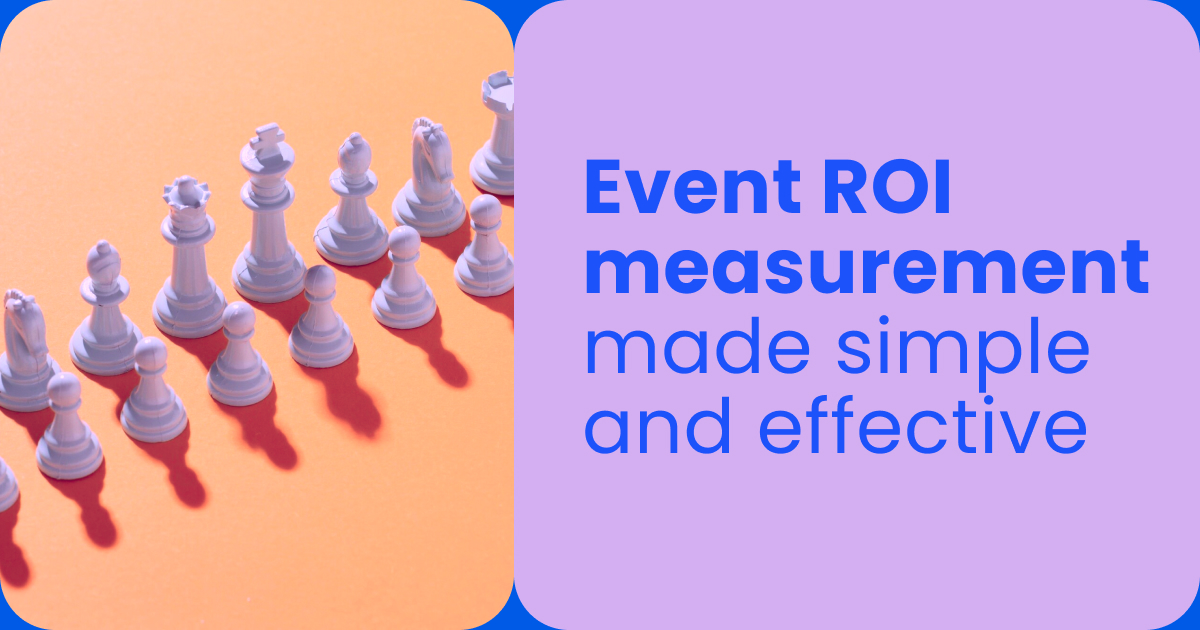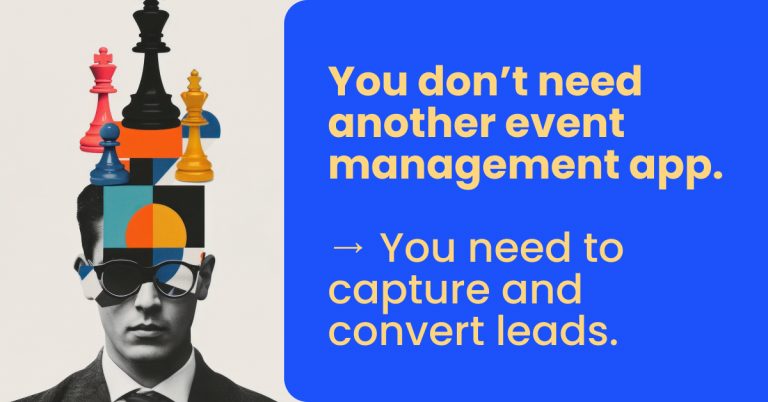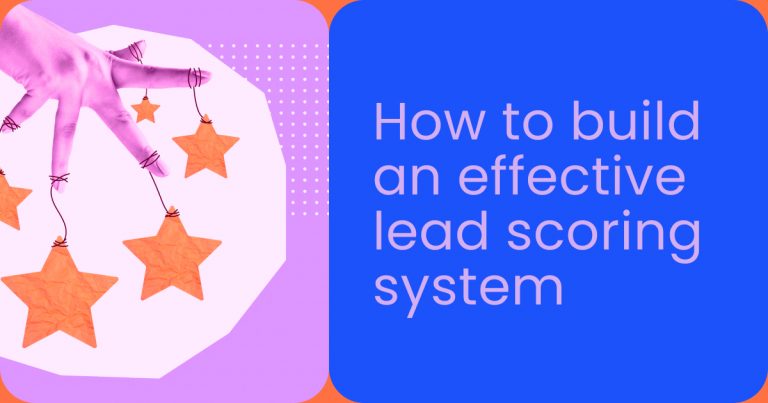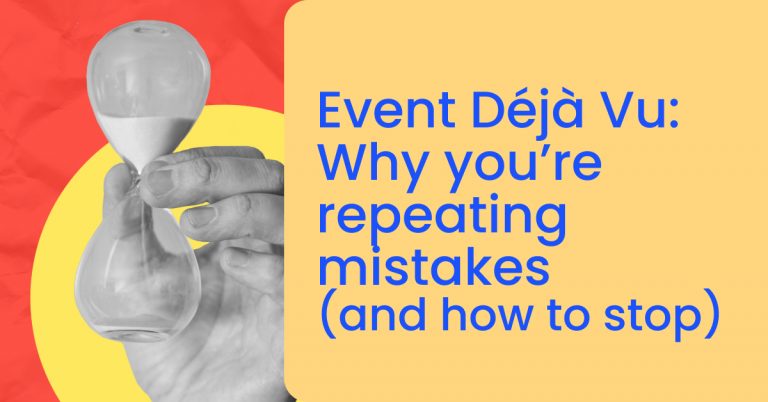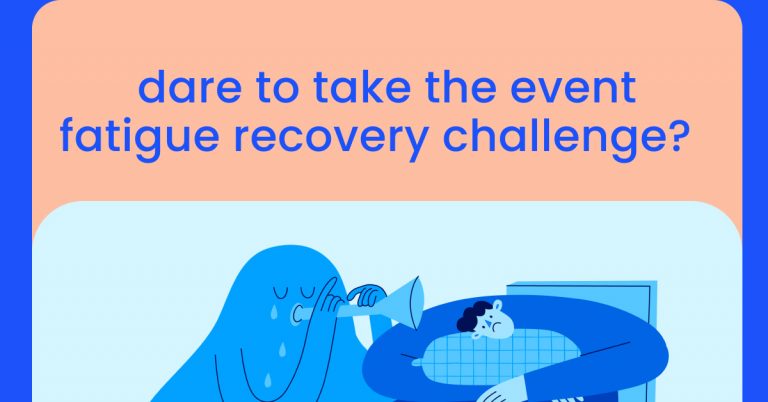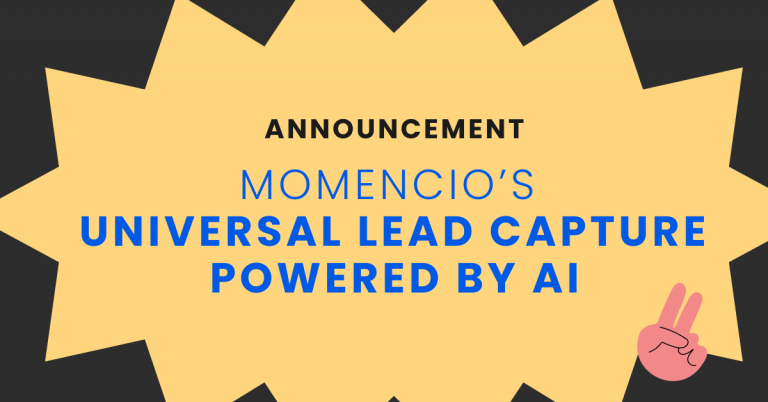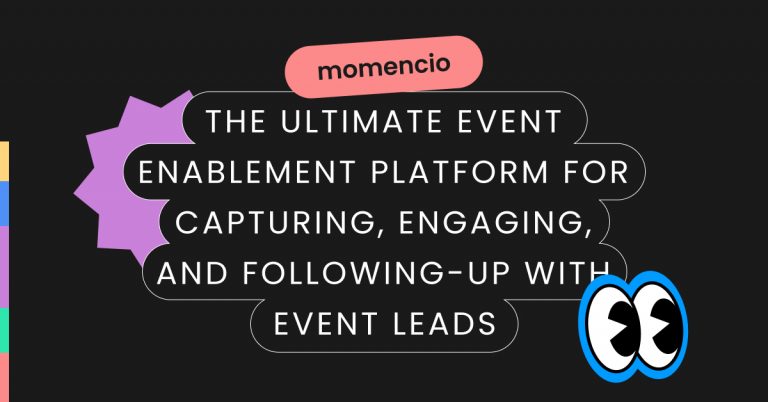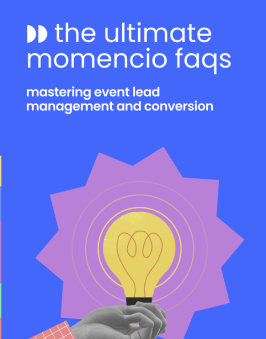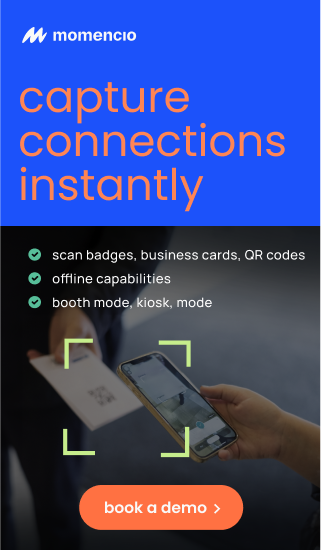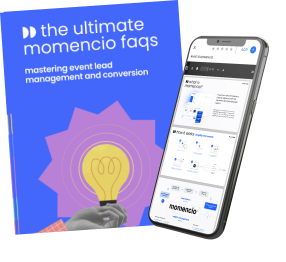Why event ROI measurement matters
Events are one of the biggest marketing investments for B2B companies, with organizations spending millions on trade shows, conferences, and networking events. But despite these massive budgets, most companies struggle to see a measurable return on investment (ROI). The common assumption is that more leads = more revenue, but in reality, that’s far from the truth.
The event ROI illusion: where companies go wrong
Many event marketers equate success with lead volume—the more contacts collected at a booth, the more successful the event, right? Wrong. The real question is: How many of those leads turn into paying customers? Without a clear strategy, the vast majority of event leads disappear into the “post-event black hole,” never leading to a sale.
- According to the latest trade show report, 79% of event leads never receive follow-ups.
- Leads contacted within 48 hours of an event are 7x more likely to convert than those followed up with weeks later.
- Companies that track only booth traffic or social media engagement are often measuring the wrong metrics for ROI.
The reality of trade show spending
According to Statista, companies in the U.S. spend over $15 billion annually on trade shows and business events. But without an optimized follow-up and lead nurturing strategy, most of this investment goes to waste.
Many organizations fail to align their sales and marketing efforts after an event, leading to:
- Unqualified leads cluttering the CRM.
- Delayed or generic follow-ups that fail to re-engage attendees.
- Lack of clear tracking on which leads convert into real revenue.
What this article will cover:
A step-by-step strategy for maximizing event ROI, covering:
- Why lead volume doesn’t equal revenue.
- How to fix poor lead qualification.
- The dangers of delayed follow-ups.
- How to track the right metrics for real ROI.
By the end, you’ll have a clear, actionable framework for ensuring every dollar spent on events drives measurable revenue.
Why more leads don’t mean more revenue
At every major trade show, you’ll find exhibitors boasting about how many leads they collected. Sales reps exchange business cards, scan badges, and capture contact details in CRM systems. On the surface, a long list of leads seems like a win. But raw lead volume is a vanity metric—it doesn’t translate directly into revenue.
The false sense of success
Companies that focus solely on the number of leads collected at events often fail to see meaningful business results. Why? Because not every lead is a potential customer. Many attendees visit booths out of curiosity, not genuine purchase intent.
- According to the a recent study, only 20% of trade show attendees have immediate buying plans.
- The remaining 80% are in early research stages, gathering information or networking.
- Without a post-event strategy, most of these leads will never engage with your brand again.
This means that without proper qualification and nurturing, 80% of your leads will never turn into actual sales opportunities. The harsh reality is that many companies mistake lead collection for lead conversion, assuming that numbers alone will drive ROI.
Unqualified leads create bottlenecks for sales teams
Another challenge with lead-heavy event marketing is the lack of proper qualification before handing leads to sales. When marketing teams pass every single event lead to sales without segmentation, it leads to:
- Sales teams wasting time chasing poor-fit leads.
- Frustration due to low conversion rates.
- Longer sales cycles because leads are not yet ready to buy.
Without a structured qualification process, sales teams spend more time filtering out bad leads than closing deals. The result? Lower event ROI and lost revenue opportunities.
How to fix it: quality over quantity
To maximize event ROI, shift the focus from lead volume to lead quality. Instead of celebrating how many leads were collected, companies should measure:
- Lead-to-opportunity conversion rate: How many leads become qualified prospects?
- Sales pipeline impact: How many leads contribute to actual deals?
- Revenue attribution: How much revenue is generated per event dollar spent?
A smarter approach involves:
- Using lead scoring to prioritize high-intent prospects.
- Segmenting leads into hot, warm, and cold categories before passing them to sales.
- Providing sales teams with context, such as booth interactions and session attendance.
By focusing on quality over quantity, companies can dramatically improve their post-event conversion rates, making trade shows and conferences a true revenue driver rather than a costly lead-generation exercise.
Poor follow-up execution: the biggest event ROI killer
Trade shows generate a surge of interest and engagement, but what happens after the event determines whether that energy translates into real business opportunities or fades into lost potential. One of the biggest reasons companies fail to optimize event ROI is poor follow-up execution.
Why most leads go uncontacted
A staggering 79% of event-generated leads never receive proper follow-ups. Why does this happen?
- No clear follow-up plan: Many companies focus so much on lead collection during the event that they fail to prepare an effective post-event strategy.
- Leads get dumped into a CRM without segmentation: Sales teams receive a massive list of names, but without context, they don’t know which leads are worth prioritizing.
- Sales teams are overwhelmed: Without a structured approach, sales reps either delay outreach or focus on the wrong leads.
- Lack of automation: Many companies still rely on manual follow-ups, causing leads to slip through the cracks.
Leads that aren’t nurtured within the first 48 hours quickly grow cold, leading to lost opportunities and wasted event investment.
Delayed follow-ups destroy conversion rates
Timing is everything when it comes to event leads. Studies show that:
- Leads contacted within 24-48 hours are 7x more likely to convert than those followed up a week later.
- The first company to respond to a lead has a 78% higher chance of winning the deal compared to competitors who delay.
- After one week of no contact, the chances of converting a lead drop by nearly 80%.
Yet, despite this, many companies wait too long to reach out. They assume that since they met the prospect at the event, the connection is strong enough to sustain interest. In reality, most attendees forget who they spoke to within days.
Need for a structured multi-touch follow-up plan
Many companies make the mistake of sending a single generic follow-up email and assuming their job is done. But one email isn’t enough—especially when attendees are flooded with emails after an event.
A structured multi-channel follow-up plan significantly improves engagement and conversions. The best-performing companies follow this multi-touch strategy:
| Follow-up stage | Action |
|---|---|
| Day 1-2 | Send a personalized email referencing the specific event interaction. |
| Day 3-5 | Follow up with a valuable resource (case study, white paper, webinar invitation). |
| Week 2 | Call or send a video message to establish a personal connection. |
| Week 3+ | Shift to long-term nurturing (newsletters, industry reports, special offers). |
Key principles for effective follow-ups:
- Make it personal: Reference specific conversations, products discussed, or event sessions attended.
- Use multiple channels: Email, LinkedIn, phone calls, and even SMS should be leveraged.
- Offer value: Instead of just asking for a sales meeting, provide useful content or insights that match their interests.
Automating follow-ups to prevent lead drop-off
Manually following up with dozens or even hundreds of leads is overwhelming. This is where automation plays a critical role.
Best practices for automated follow-ups:
- Trigger the first email immediately after the event with a personalized thank-you note.
- Use lead scoring to prioritize high-intent leads and automate personalized sequences.
- Set up CRM workflows that remind sales reps to follow up with warm leads at the right time.
Companies that implement structured, automated multi-touch follow-ups see 35% higher event lead conversion rates compared to those that rely on ad-hoc outreach.
Measuring real event ROI with the right metrics
Many companies mistakenly measure event success using vanity metrics like booth traffic, social media engagement, or lead volume. While these indicators provide surface-level insights, they don’t reflect actual business impact. To optimize event ROI, companies must shift their focus to metrics that measure revenue outcomes, not just activity levels.
Vanity metrics vs. revenue-driving metrics
Vanity metrics create a false sense of success because they don’t connect directly to revenue. Below is a comparison of what most companies track vs. what they should track:
| Vanity metrics | Revenue-driven metrics |
|---|---|
| Total number of leads collected | Lead-to-opportunity conversion rate |
| Booth traffic & footfall count | Sales pipeline impact |
| Social media engagement | Revenue generated per event |
| Number of business cards exchanged | Customer acquisition cost (CAC) per event |
Instead of celebrating a high number of leads, companies should analyze how many of those leads turned into real sales opportunities.
Key event ROI metrics to track
To accurately measure event ROI, companies need to track the following metrics:
- Lead-to-opportunity conversion rate
- Measures how many leads from the event turn into actual sales opportunities.
- Formula: (Number of qualified opportunities / Total leads collected) × 100.
- Why it matters: A high lead count means nothing if most leads don’t progress in the sales funnel.
- Time-to-close (sales cycle length)
- Measures how long it takes to convert an event lead into a paying customer.
- Why it matters: If event-generated leads take significantly longer to close than other sources, they may not be high-quality leads.
- Customer acquisition cost (CAC) per event
- Formula: (Total event cost / Number of new customers acquired from the event).
- Why it matters: Helps companies understand if the event is a cost-effective acquisition channel.
- Revenue attributed to the event
- Tracks total revenue generated from event-related deals.
- Why it matters: This is the ultimate metric that determines whether an event was financially successful.
- Return on investment (ROI) calculation
- Formula: (Total revenue from event deals – Total event cost) / Total event cost × 100.
- Why it matters: This determines whether an event was profitable or a waste of resources.
How to implement proper event ROI tracking
Many companies fail to measure event ROI effectively because they lack proper tracking systems. Below are best practices for accurate event ROI measurement:
- CRM integration: Ensure all event-generated leads are tagged in the CRM to track their journey through the sales pipeline.
- UTM tracking for digital events: Use UTM codes for event-related marketing campaigns to track engagement and conversions.
- Multi-touch attribution models: Events are rarely the only touchpoint in a buyer’s journey. Use attribution models to assess how much impact the event had on closing a deal.
- Marketing & sales alignment: Ensure sales teams report back on which leads converted so marketing can accurately measure event success.
Why measuring the right metrics matters
Companies that prioritize revenue-driven event metrics instead of vanity metrics see significant improvements in sales efficiency and marketing ROI. Proper tracking allows businesses to:
- Identify which events generate the highest-quality leads.
- Optimize future event investments based on revenue impact.
- Improve sales and marketing alignment to maximize conversions.
By focusing on lead quality, conversion rates, and sales pipeline impact, companies can transform trade shows and conferences from costly branding exercises into high-performing revenue generators.
How to create a high-converting event follow-up strategy
A well-structured follow-up strategy is the most critical factor in event ROI measurement. Even the best trade show performance is meaningless if leads aren’t properly engaged post-event. A disorganized or slow follow-up approach results in missed sales opportunities, wasted marketing budgets, and lower ROI.
A high-converting event follow-up strategy should include timely, personalized, and multi-channel outreach that nurtures leads into customers.
Why follow-ups fail and how to fix them
Most companies struggle with follow-ups because:
- They rely on a single email blast that lacks personalization and feels robotic.
- Outreach is delayed—by the time a lead is contacted, they’ve forgotten about the event.
- There’s no clear segmentation, meaning low-priority leads take up sales reps’ time while hot leads go cold.
- Sales and marketing teams aren’t aligned, leading to lost or mishandled leads.
Fixing these issues requires a structured follow-up cadence that prioritizes fast, targeted communication.
The ideal event follow-up framework
A high-converting follow-up strategy should span multiple touchpoints over several weeks, keeping the conversation warm while gradually moving leads toward a sale.
Step 1: Immediate personalized follow-up (within 24 hours)
- Send a personalized email referencing the conversation at the event.
- Include a call to action (CTA) such as scheduling a follow-up meeting or a demo.
- Connect on LinkedIn with a short message referencing the event discussion.
Step 2: Value-driven engagement (Days 3-5)
- Send a relevant resource—a case study, a webinar recording, or a whitepaper that aligns with their interests.
- Ask an open-ended question to keep the conversation going, such as: “What stood out to you most about our conversation?”
Step 3: Mid-term check-in (Week 2)
- Follow up with a phone call to understand their needs better.
- Offer an exclusive post-event consultation to help them apply event insights to their business.
Step 4: Nurturing (Weeks 3-4)
- If there’s no response, shift them into a long-term nurture sequence that includes industry insights, exclusive offers, and upcoming event invitations.
- Monitor their engagement—if they open emails or visit your website, consider a retargeting campaign.
Why a multi-channel approach increases conversion rates
A single email follow-up is not enough. The best-performing event marketers use a mix of:
- Email (personalized, with valuable content).
- LinkedIn (soft connection requests and engagement with their posts).
- Phone calls (for high-intent leads who engaged at the event).
- Retargeting ads (keeping your brand top-of-mind for attendees).
Automating follow-ups for scalability
A great follow-up process should be consistent and scalable. Automation tools ensure that leads don’t fall through the cracks.
- Use CRM automation to trigger follow-ups based on event interactions.
- Create dynamic email sequences tailored to different lead segments.
- Integrate lead scoring to prioritize hot leads for personal outreach.
Measuring follow-up effectiveness
Event ROI measurement should include tracking how effective the follow-up process is. Key metrics include:
- Email open and response rates—low engagement signals a need for better personalization.
- Meeting booking rates—shows how well leads are converting into conversations.
- Lead-to-opportunity conversion rates—measuring how many follow-ups turn into pipeline opportunities.
A structured and multi-touch follow-up strategy is the difference between lost leads and real revenue. Companies that optimize their post-event engagement consistently outperform those that treat follow-ups as an afterthought.
How to align sales and marketing for better event ROI measurement
To ensure accurate event ROI measurement, sales and marketing must work together seamlessly. Below is a structured breakdown of how to align both teams effectively.
Key strategies to align sales and marketing
| Strategy | What happens without it | Best practices for higher event ROI measurement |
|---|---|---|
| Define clear lead qualification criteria before the event | Sales wastes time on low-intent leads, while marketing hands off unqualified contacts. | Establish lead scoring models and classify leads into hot, warm, and cold categories based on engagement. |
| Implement a structured lead handoff process | Leads are dumped into the CRM without context, causing sales to overlook valuable prospects. | Ensure lead records include booth interactions, attended sessions, and engagement levels for prioritization. |
| Ensure real-time CRM integration | Leads get lost between marketing and sales, making it difficult to track conversions and measure ROI. | Use automated CRM syncing to ensure every lead is tagged, scored, and monitored in real time. |
| Establish follow-up SLAs (service-level agreements) | Sales delays outreach, causing leads to go cold and reducing event ROI. | Set clear follow-up deadlines (e.g., hot leads must be contacted within 24 hours) and track compliance. |
| Track unified event ROI metrics | Marketing and sales measure different KPIs, leading to unclear ROI data. | Use shared dashboards to track lead-to-opportunity conversion rates, deal velocity, and event-attributed revenue. |
| Hold post-event debrief meetings | No clear feedback loop, making it hard to improve event lead quality for future efforts. | Conduct joint post-event reviews to refine lead criteria, improve segmentation, and optimize engagement strategies. |
Why sales and marketing alignment improves event ROI measurement
- Higher lead conversion rates → Sales focuses only on qualified leads.
- More accurate ROI tracking → Every event lead’s progress through the pipeline is visible.
- Faster deal cycles → High-intent leads receive timely, personalized follow-ups.
By bridging the gap between marketing and sales, companies can maximize post-event conversions and attribute revenue more accurately to event participation.
Conclusion
Effective event ROI measurement is not just about counting leads—it’s about tracking real business impact and ensuring that every event dollar spent contributes to revenue growth. Companies that implement structured follow-up strategies, align sales and marketing, leverage automation, and track revenue-focused metrics consistently outperform those that rely on outdated vanity metrics.
Key takeaways for maximizing event ROI measurement
- Shift from vanity metrics to revenue-driven metrics
- Don’t track just booth traffic or lead volume—focus on lead-to-opportunity conversion rates, sales cycle impact, and revenue attribution.
- Improve follow-up execution
- 80% of event leads never convert due to poor follow-ups—implement a structured, multi-channel approach to engage leads within 24-48 hours.
- Segment leads for higher conversions
- Hot leads need immediate sales attention, while warm leads require nurturing.
- Proper segmentation ensures that sales focuses on the highest-value opportunities.
- Align sales and marketing for higher ROI measurement
- Define clear lead qualification criteria, CRM integration, and follow-up SLAs before the event.
- Track shared event ROI metrics to improve future event strategies.
- Leverage automation for scalability
- Use AI-powered lead scoring, CRM workflows, and automated follow-ups to streamline post-event engagement.
- Companies that automate follow-ups see 35% higher event lead conversion rates.
- Continuously refine and optimize event strategies
- Hold post-event debrief meetings to analyze performance, optimize outreach, and improve lead qualification.
- Use data-driven insights to determine which events deliver the highest ROI.
Event ROI measurement is a competitive advantage when done right. Companies that track real sales impact, improve lead-to-customer conversion rates, and optimize post-event engagement turn events into consistent revenue-generating opportunities.
By applying these proven strategies, businesses can stop wasting event budgets on low-impact activities and instead achieve measurable, scalable, and predictable event success.
FAQs
- What is the most accurate way to measure event ROI?
- The most accurate way to measure event ROI is by tracking the revenue generated from event-sourced leads against the total cost of participation. Instead of relying on vanity metrics like booth traffic or social media impressions, companies should analyze lead-to-opportunity conversion rates, sales pipeline impact, and actual closed deals attributed to the event. Using a CRM-integrated tracking system ensures that every lead’s journey from first contact to revenue is recorded.
- How can companies ensure their event ROI measurement is reliable?
- Reliable event ROI measurement requires a structured approach to data collection, lead tracking, and revenue attribution. Companies must integrate their event lead capture system with a CRM to follow leads through the sales funnel. Aligning sales and marketing on key success metrics, such as lead qualification criteria and follow-up timelines, prevents inaccurate reporting. Automating data entry and using real-time dashboards also reduce human error and provide a clearer view of event performance.
- Why do many companies struggle with event ROI measurement, and how can they fix it?
- Many companies struggle with event ROI measurement because they focus on lead volume instead of lead quality, lack a structured post-event follow-up process, and fail to track attribution data. To fix this, businesses should implement lead scoring to prioritize high-intent prospects, ensure CRM and marketing automation integration for real-time tracking, and define clear follow-up SLAs between sales and marketing teams. Without these foundational elements, event ROI data remains incomplete or misleading.
- How can momencio help improve event ROI measurement?
- momencio helps businesses optimize event ROI measurement by providing real-time lead tracking, automated follow-ups, and in-depth analytics that show which leads are progressing through the sales pipeline. The platform integrates seamlessly with CRMs, ensuring that every event-generated lead is nurtured properly. With momencio’s lead engagement insights, companies can prioritize follow-ups, refine their event strategies, and increase their return on event investments by focusing on qualified leads rather than raw numbers.
- Where can I find a simple way to calculate my event ROI?
- For a quick and effective way to calculate your event ROI, use momencio’s simple event ROI calculator. This tool helps businesses assess their event profitability by comparing costs and revenue impact, providing a clear understanding of event performance. Whether you’re planning a new event or analyzing past results, this calculator simplifies ROI measurement and ensures data-driven decision-making.
